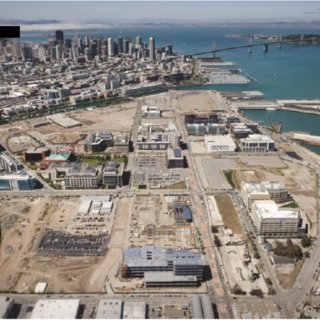
Brownfield sites can generate negative externality on real estate value, profit, and productivity. The use and development of brownfield sites are perceived to be risky and costly, in part due to the problems of large scale environmental remediation.
To deal with this issue, we explore the economic and financial barriers in property and planning when developing large-scale brownfield sites. This in turn may consider new notions of what future value can be generated when at first glance would not be considered economically viable.
A core theme in conceptualising the barriers, is to give some economic geography historical context. Importantly and still relevant, is that early 20th Century city growth gave rise to central urban decay as wealthier residents moved out to suburbs, and thus providing central places where future brownfield development could emerge.
Bid-rent theory suggests that rents beyond the urban core (in a monocentric city) become lower, with competing land use classes in relation to the core, superseding each other over time. For instance, if industry moves outwards to benefit from lower rents, new brownfield land use emerges in the core for commercial office development.
From a residential land use perspective, spatial concentrations and categories can form along socio-economic differences such as ethnicity and age. Furthermore, critical political economy thinking of a structural nature can posit that low-income residents have fewer financial options to choose a move to the suburbs. Thus spatially, we see low-income households living near decaying industrial sites or ones that have become new brownfield developments.
Late 20th-century and early 21st-century industrialization has relocated tech industrial spaces to the periphery of cities near good transport, as well as clustering around high paid service spaces in the core that would encourage brownfield (re)development. Development land on the periphery is simultaneously influencing the emergence of brownfield land in the centre of cities.
For urbanisation in the centre, we can argue that this new contested frontier is only viable for development in wealthier pockets, and developments that can price out still functioning low-income neighbourhoods. One essential point is that there may only be a shift from decay towards infill and renewal, if the initial stock being ’thinned out’ is of sufficient quality. If not, large-scale demolition will be the approach to brownfield development, as part of a broader renewal and regeneration project.
Neighbourhood quality is also vital place making, with social factors such as proportional concentrations of crime and access to good schools. This means that higher-income residents may be reluctant to live on brownfield sites because of poor environmental quality.
In the broader context, especially for advanced industrially restructuring nations, the barriers of brownfield development and affordable housing at scale have derived structurally from the reversal effects from 1970s deindustrialization and globalization in some core cities. Comeback cities that have seen a return to urban growth in the 1980s and 1990s have emerged as some of the most desirable places to live and have opportunities to rebuild on former industrial brownfield sites.
Interesting with theoretical underpinning!